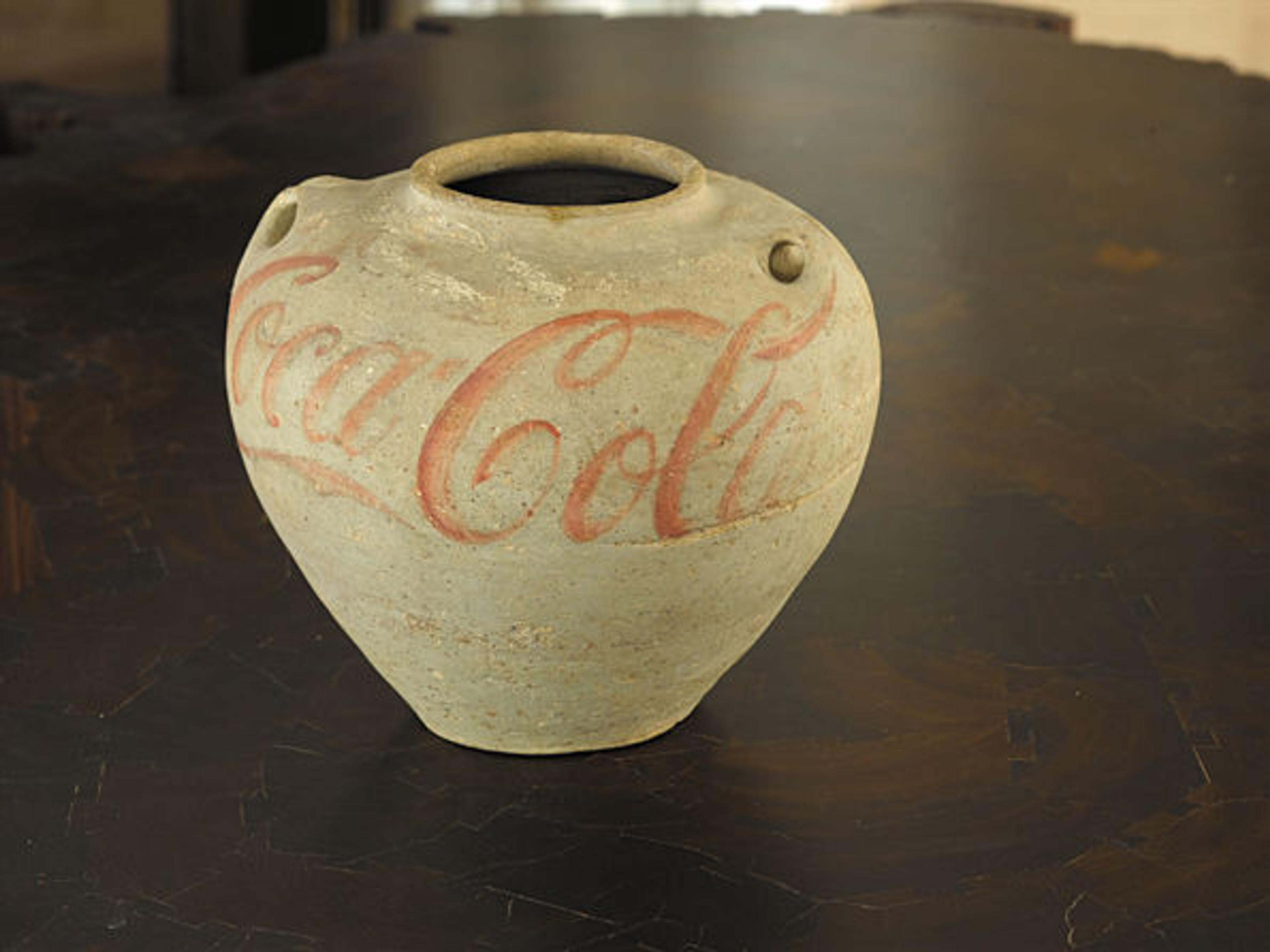Ai Weiwei (Chinese, b. 1957). Han Jar Overpainted with Coca-Cola Logo, 1995. Earthenware, paint; H. 9 7/8 in. (25 cm); Diam. 11 in. (28 cm). Lent by M+ Sigg Collection, Hong Kong. © Ai Weiwei
Upon first seeing Han Jar Overpainted with Coca-Cola Logo in the special exhibition Ink Art: Past as Present in Contemporary China, we were overwhelmingly reminded of one of the larger themes of modern Chinese art: the conflict between the progression of the modern and the preservation of the traditional. This Han dynasty pot emblazoned with the faded Coca-Cola logo struck us as an almost humorous representation of this conflict.
There is an aversion by some to the radical shift from traditional Chinese characters to their simplified counterparts, with those who are against the movement arguing that important elements of Chinese culture are being lost. What this vase represents is a single piece of Chinese history that is aggressively being merged with the modern world, but what is quite notable is that the result is not so much a destruction of the classical as it is an evolutionary product of convergence.
This work is a curious blend of tradition and modernity, using old-world artwork as a billboard for new-age advertising. We were fascinated by the work's connection to pop art, which used everyday objects to comment on the prevalence of consumerism in the modern world. Just as Andy Warhol and Jasper Johns took common images from pop culture and gave them unique spins, Ai Weiwei employs the ubiquitous Coca-Cola logo in his piece.
However, the logo itself is just one element that makes the piece both visually and mentally interesting. The work derives its meaning not only from the logo but from its relationship with the Han dynasty pot. Although the very presence of the logo seems to deface the relic, the faded quality of the logo actually matches the historical look of the pot—suggesting that, rather than industry aggressively dominating culture, tradition and innovation can coexist in harmony.
The juxtaposition of the old and the new forces the viewer to consider China's connection with its past, and asks us to consider whether tension or unity—or both—connects the past and the present.
